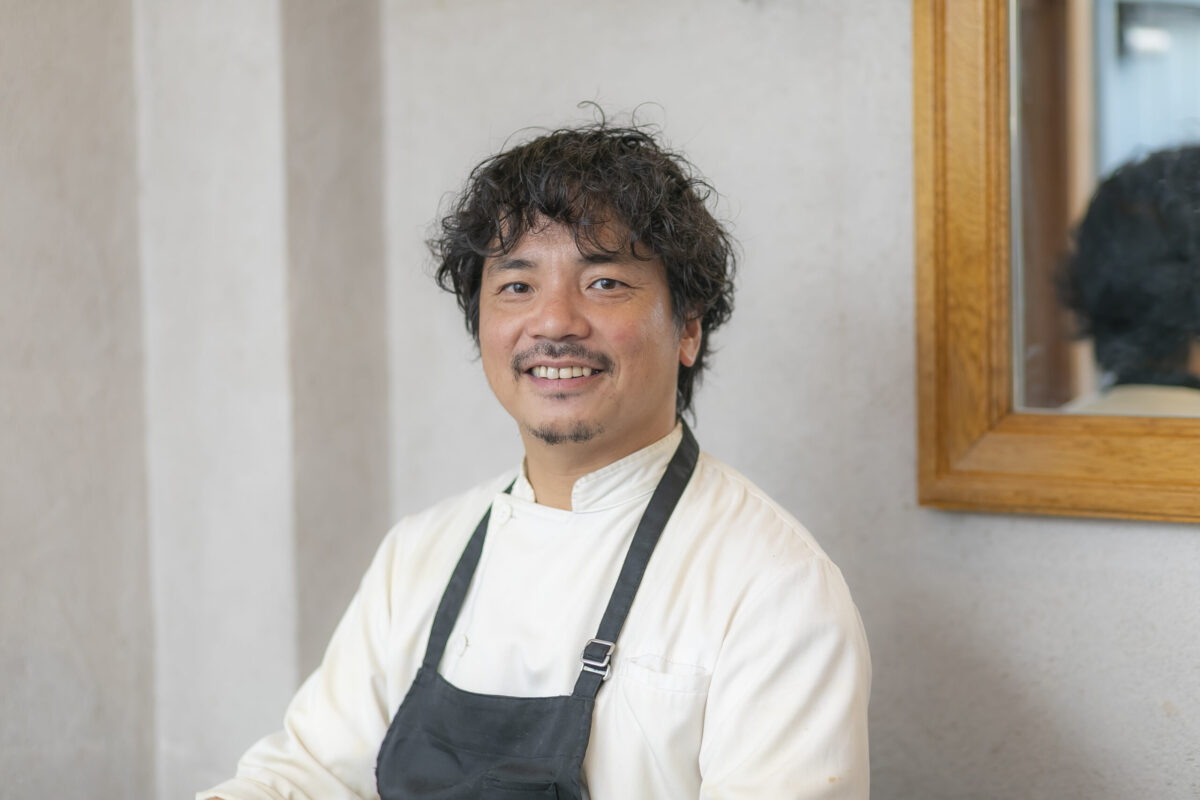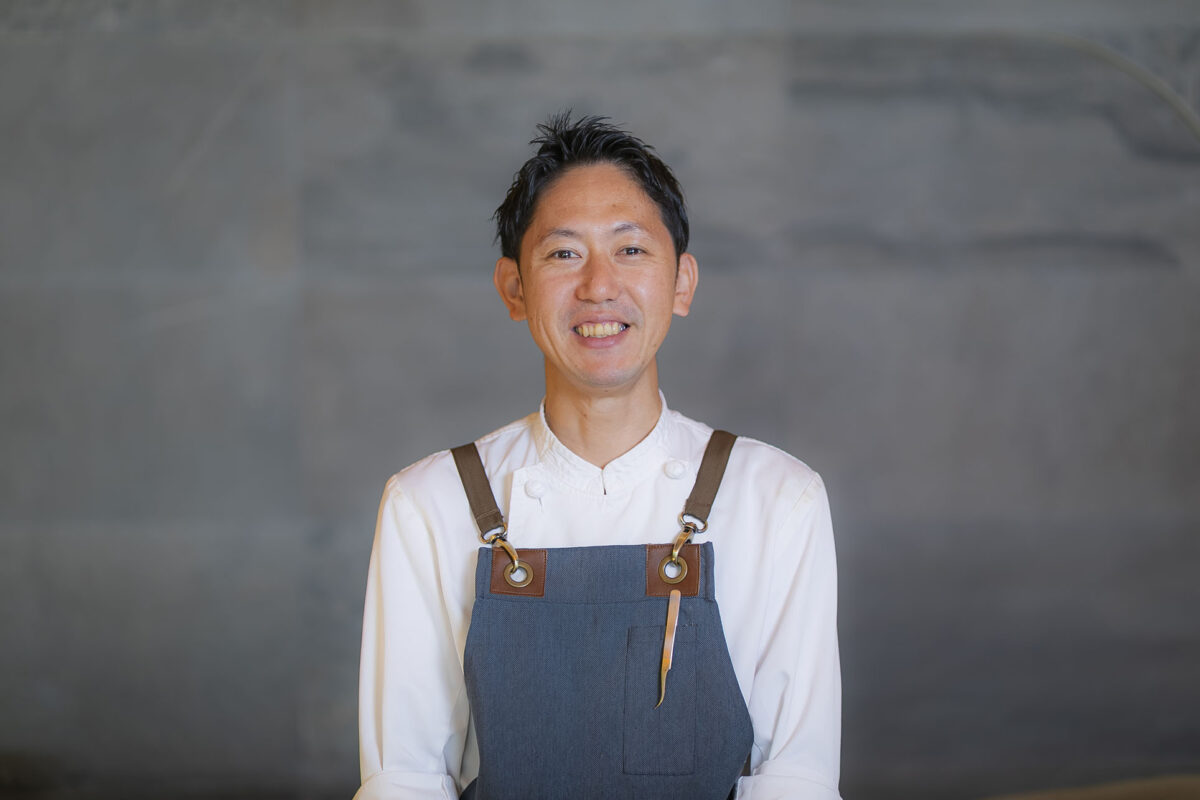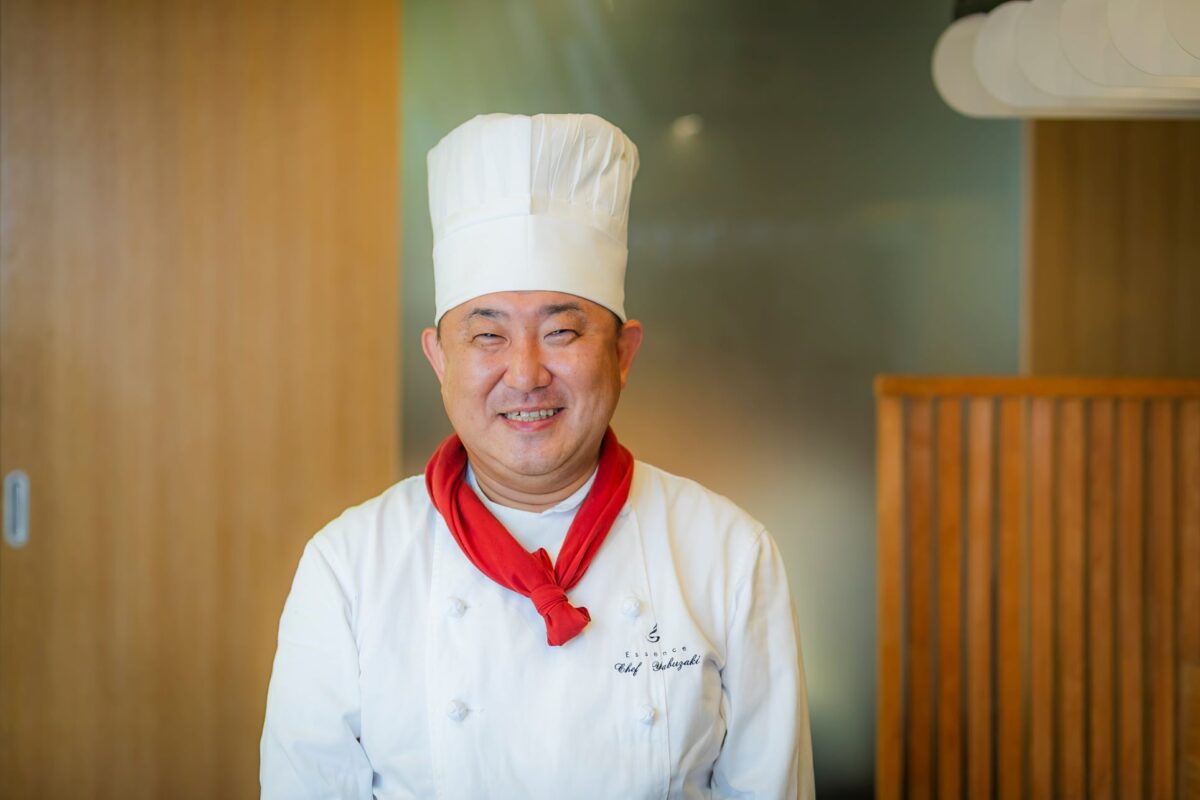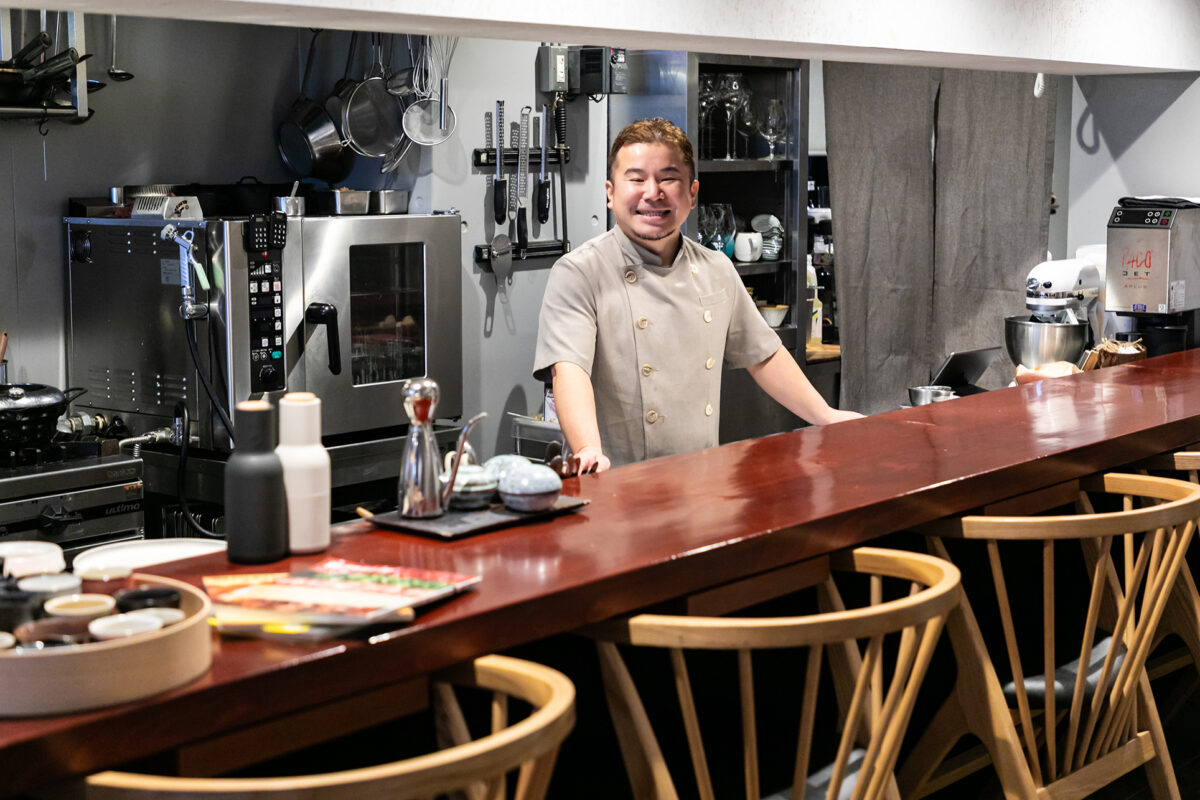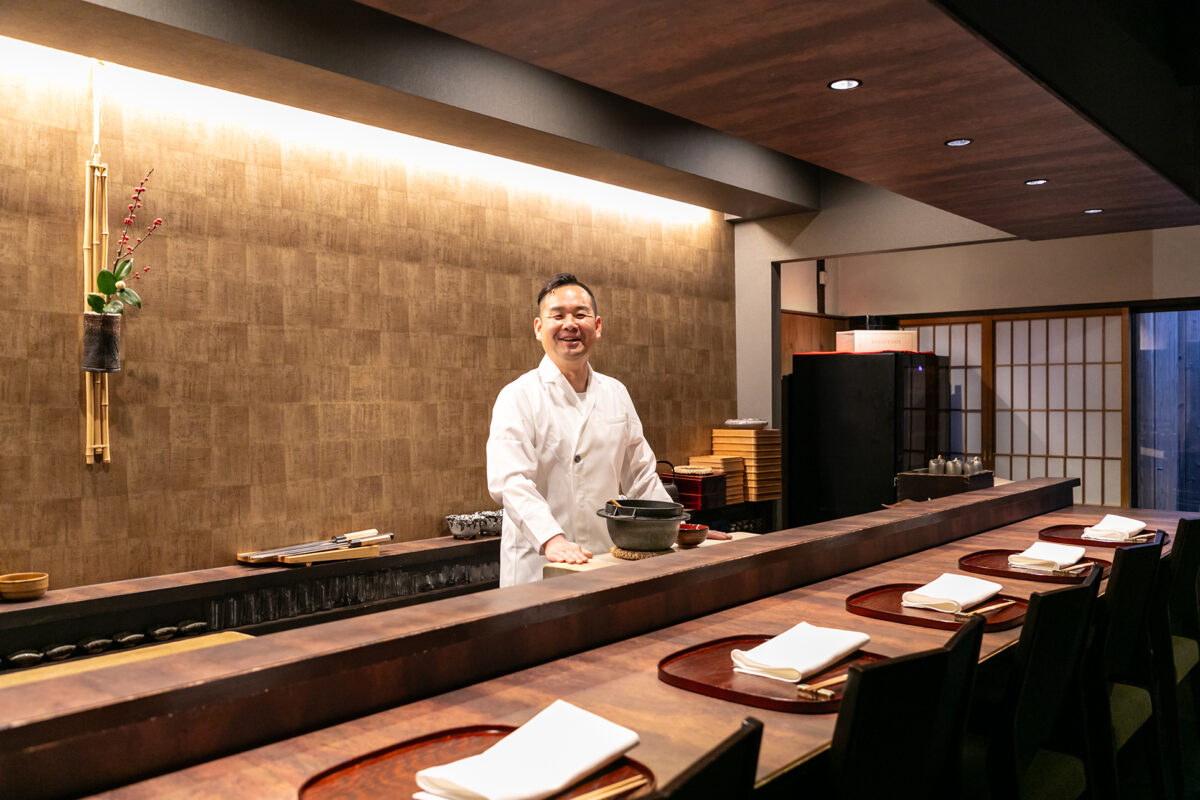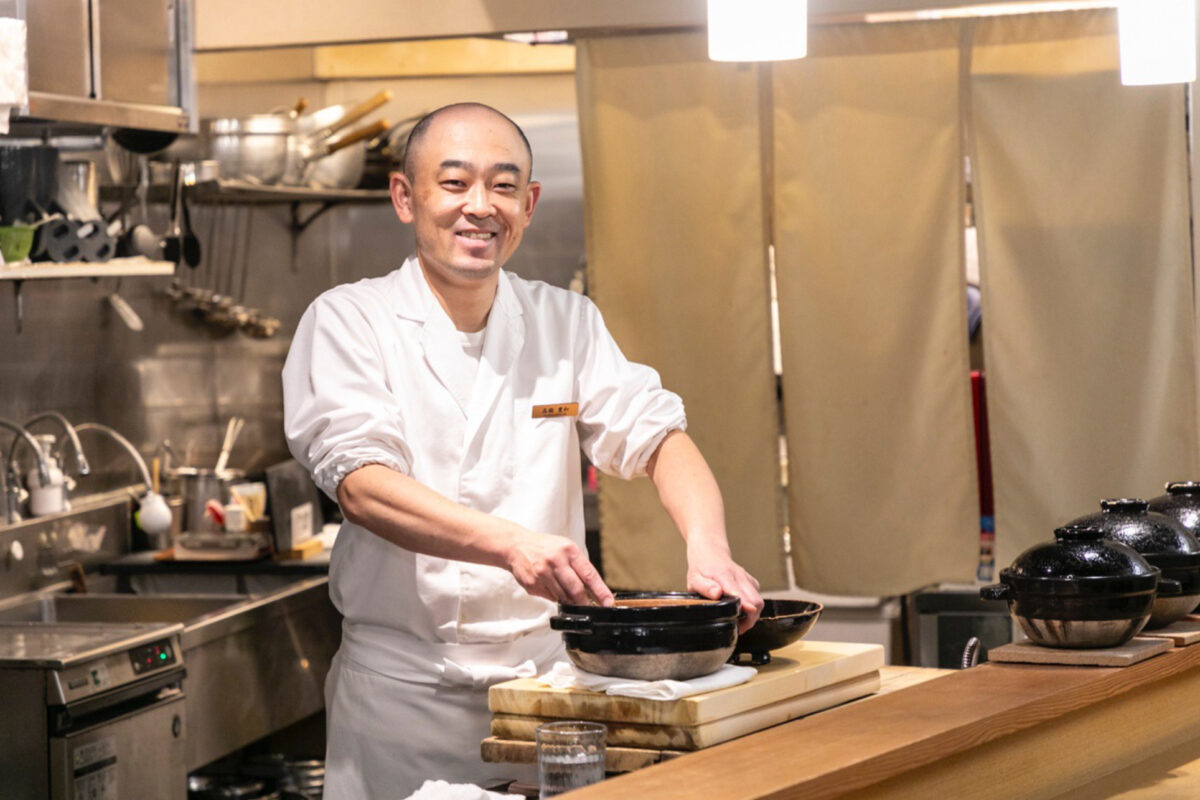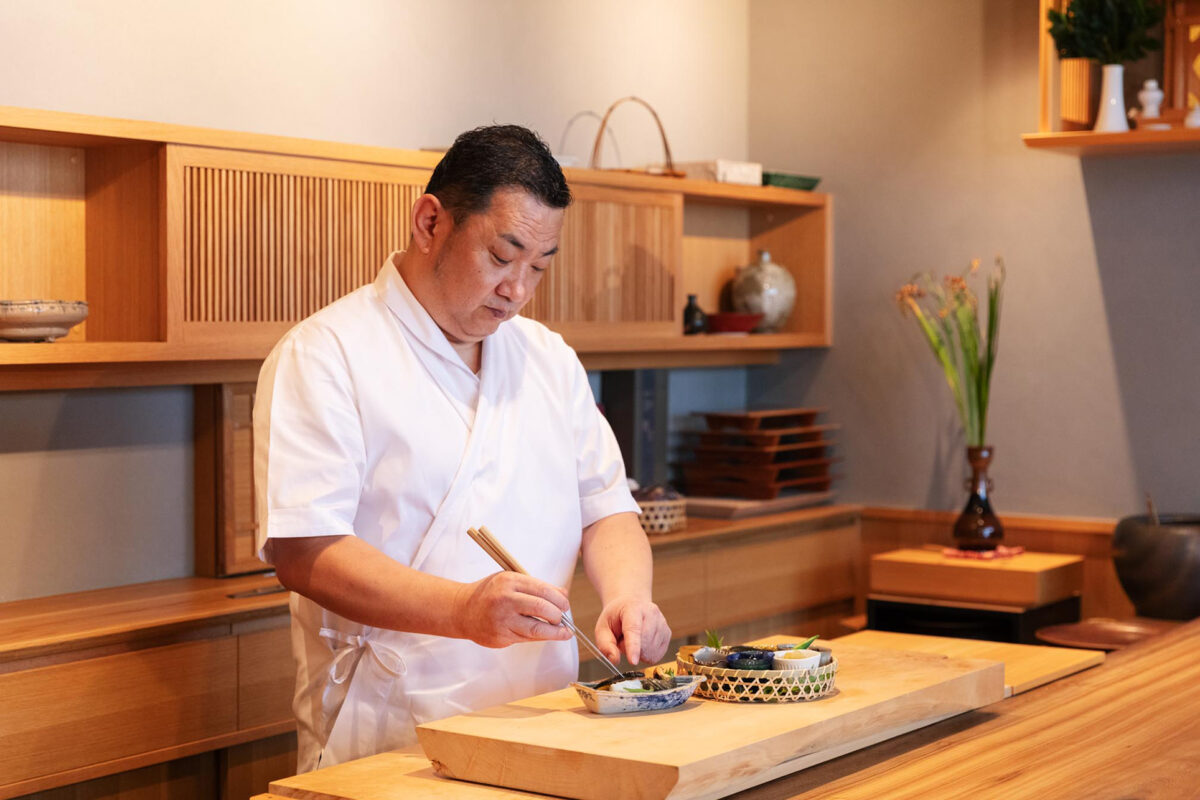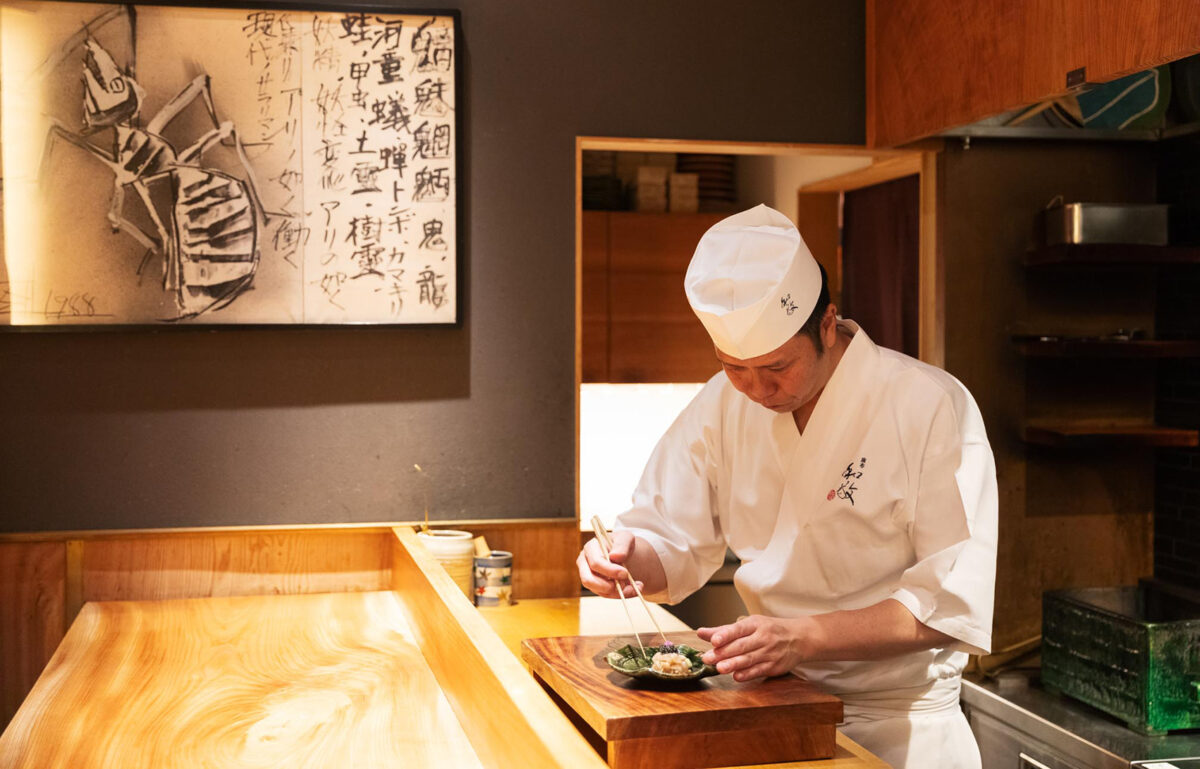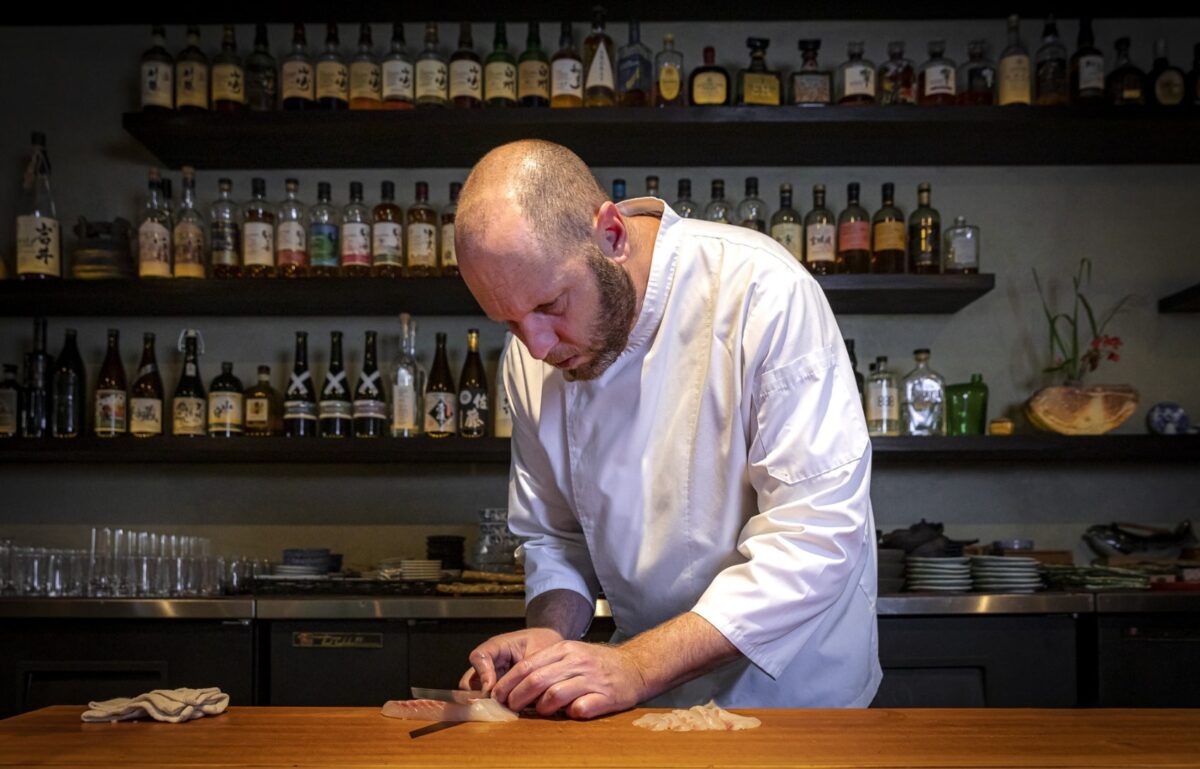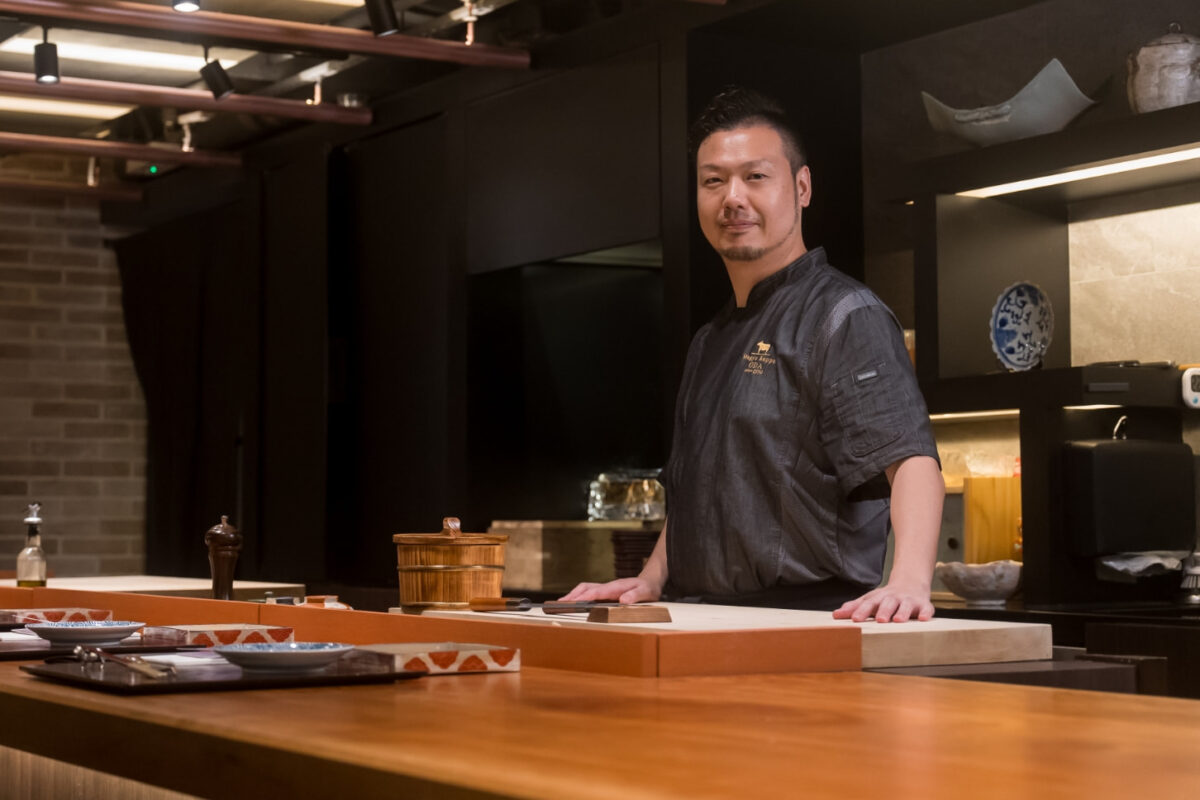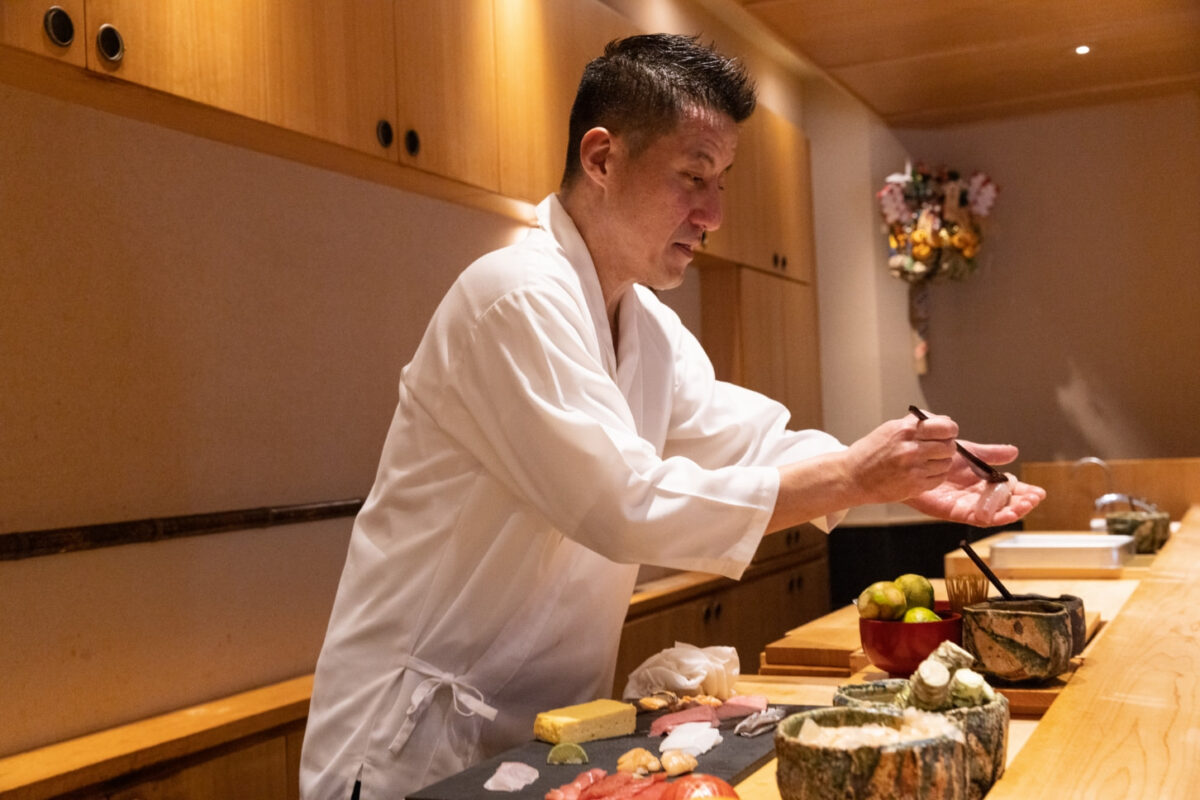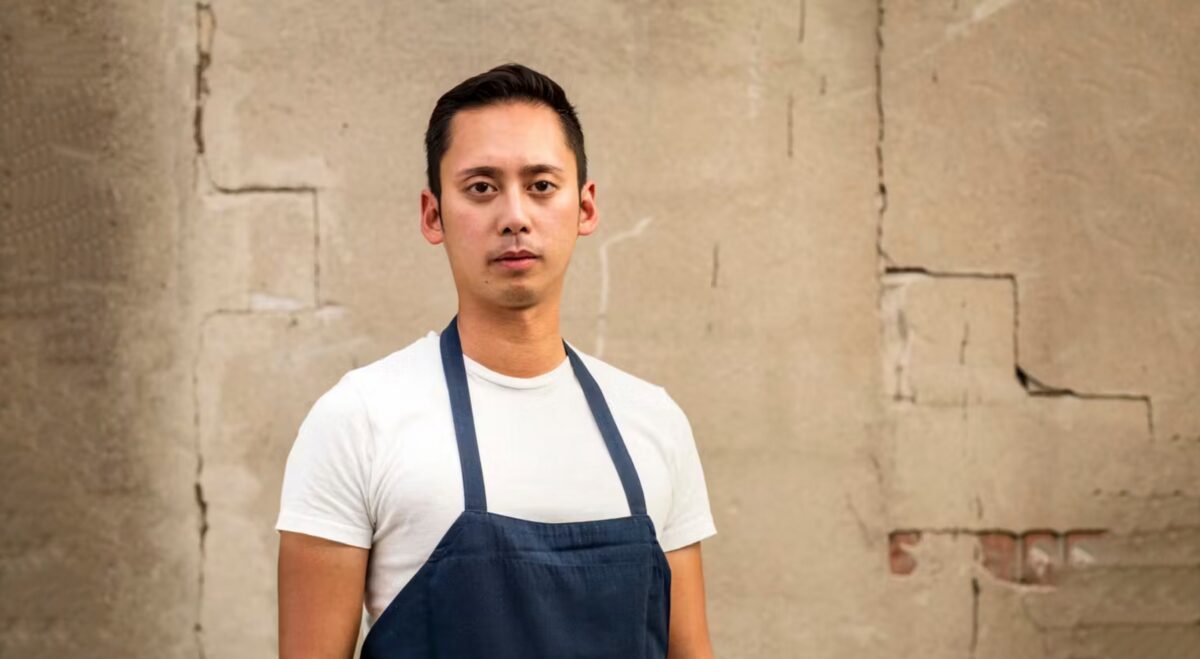CHILAN
Modern Vietnamese cuisine and natural wine
to heal the body and soul
A 7-minute walk from Ajina Station, which is 25 minutes from JR Hiroshima Station on the Sanyo Main Line. CHILAN, which resembles a traditional storehouse in a residential neighborhood, is a modern Vietnamese cuisine and natural wine restaurant that is open for lunch three days a week and for private parties by reservation only. A true rising star to lead the next generation, Owner chef Chilan Donguyen was a winner at RED U-35 2021, Japan’s largest culinary competition for discovering the technical talents and new values of young chefs.
The pandemic was the impetus for her move to Hatsukaichi City in Hiroshima Prefecture, the hometown of her husband, Chiaki Fujii. At present, the couple are pursuing the ideal state of a sustainable restaurant while balancing child-rearing and running the restaurant. A seasonal chef’s choice Vietnamese course of seven dishes is crafted in a modern style that blends tradition with French techniques. Each dish is served as a course meal paired with a drink selected by sommelier Fujii. The closing dish, a “dashi-poured rice” made with seasonal ingredients from the Seto Inland Sea, features fluffy rice shaped into a ball and topped with a rich broth carefully prepared from blowfish. It’s a comforting dish that soothes weary stomachs. Not only for its cuisine, but every corner of the space is infused with a sense of style and relaxation, putting this a restaurant in the spotlight.
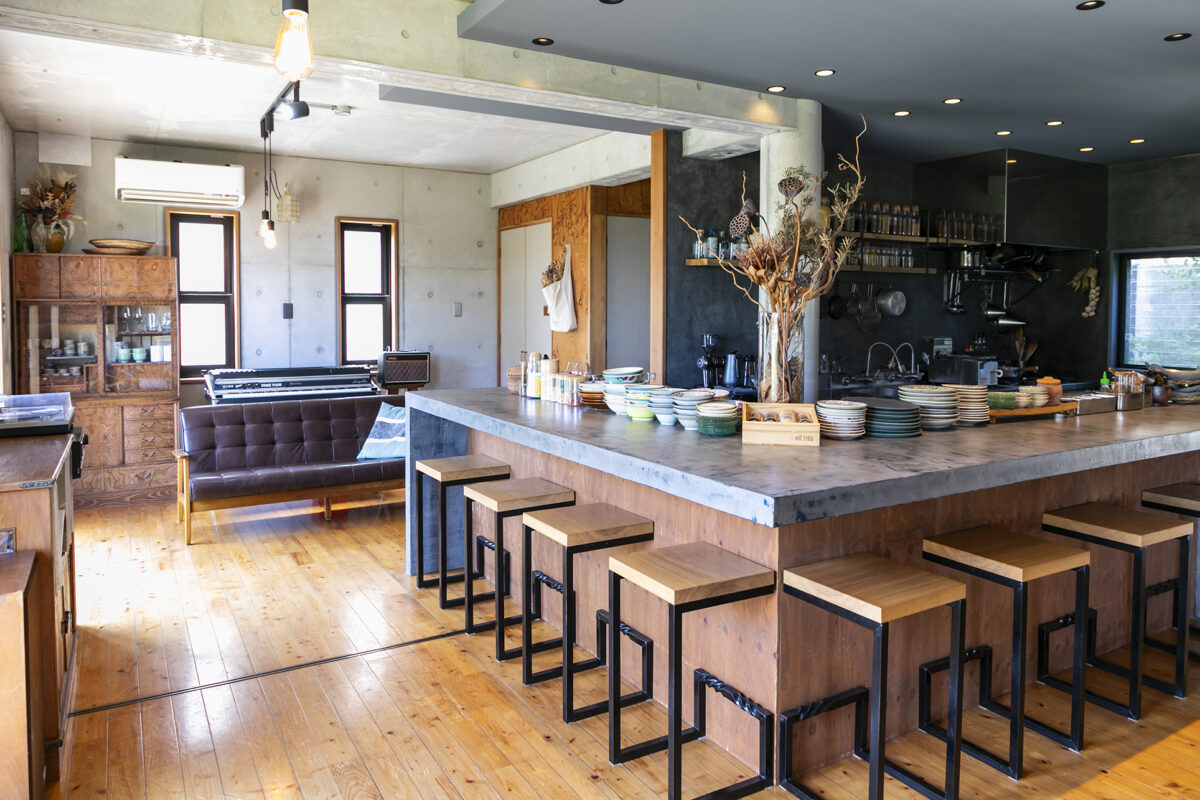
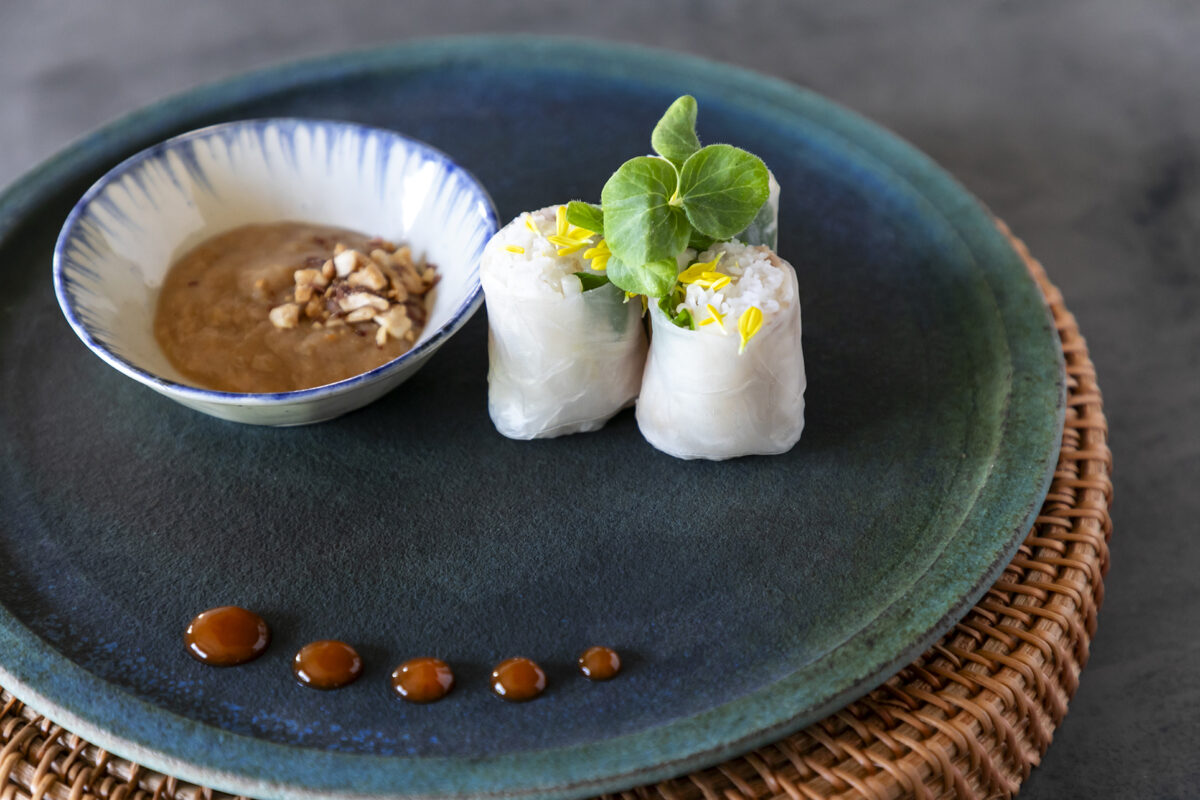
The significance of having roots
in Japan and Vietnam.
My father and mother are Vietnamese immigrants who came to Japan. I lived in Tokyo since birth, except for when I studied abroad during junior college and when I trained as a chef overseas. As all of my Vietnamese relatives have moved abroad, I have only visited Vietnam a few times a year and have never lived there. However, when I think of home cooking, I think of Vietnamese food. My father and mother lived in Vietnam until they were adults, so their native language and food culture are both Vietnamese. At home, I ate Vietnamese food that my mother cooked as a matter of course. It was the taste of my parents’ hometown, and for me, it is “Mom’s cooking”.
I worked part-time at a French restaurant while in high school, and that led me to pursue a career as a chef. I also considered living in Tokyo and starting my own restaurant there, but I was disenchanted by the crowds in the city center and the packed trains. The more I thought about land prices in Tokyo and the environment for raising children in the future, the more I felt a gap between my ideals and reality, so I knew I would have to escape the city at some point. It was then when I met my husband, Chiaki Fujii. I asked myself how can I continue my career as chef, even after having children? The two of us thought about life plans together, and in 2019 we moved to Hatsukaichi City in Hiroshima Prefecture, my husband’s hometown.
An approach to Vietnamese cuisine
that originates from the local area.
“Setouchi ingredients, prepared using French techniques, in Vietnamese cuisine. Enjoyed with natural wines that convey the passion of the producers.”That is the concept we decided on when we first opened the restaurant. I originally wanted to become a pâtissière, and I continued training because I love French cuisine, but I thought I needed to offer an even more overwhelming individuality to continue running my restaurant while parenting in a rural area. When I thought about my strengths as a chef, I realized that they were being a Vietnamese born in Japan and at the same time a Japanese with roots in Vietnam. I want to express the rich natural blessings of the Setouchi region, where my husband was born and raised, and the French techniques I have cultivated, by combining them around the axis of Vietnamese cuisine. I think that this is a unique style that we have arrived.
My master in Vietnamese cooking is, of course, my mother. Before relocating, I visited my parents’ house many times and asked my mother to teach me her recipes again, especially the ones I like. The spring rolls I serve as part of the course are also based on my mother’s home cooking, but I have refined them using ingredients from Setouchi.

The rice-eating cultures of two countries.
A repertoire from different individualities.
The rice-eating cultures of two countries. A repertoire from different individualities.
Just as rice is an indispensable ingredient for the Japanese, it is also essential for the Vietnamese. We also eat cooked rice, and there are also processed products such as rice noodles and rice paper, so rice appears on the dining table in some form every day.
In Japan, there is a clear distinction between the four seasons, so there is a specific season when new rice is harvested, but in Vietnam, there are two or three harvests a year. However, even if you can harvest a lot, the tropical climate in Vietnam is not suited to long-term rice storage, so there is the aspect that you cannot consume it all while it is still delicious. This is how the Vietnamese food preservation culture came to be, where rice is dried and made into processed products for long-term storage and use in cooking.
Also, Japanese rice is a food that can reach a state of evoking cries of “sweet and delicious!” simply by cooking it. But the same cannot always be said of Vietnamese rice because of its storage environment, and the concept of brand rice has only gradually taken off in recent years. Despite having the same rice-eating culture, the Vietnamese food culture, which makes the most of the characteristics of rice by processing it, adds to the repertoire of CHILAN’s cuisine.
Respect for the producers
who create Japanese rice with overwhelming appeal.
It might be presumptuous of me to comment on the excellence of Japanese rice, but I believe the level of cultivation techniques focused on quality here is truly outstanding, even viewed on a global scale. I believe that the secret to the greatness of Japanese rice is the diverse and long-term accumulation of varietal development. In the first place, rice is a grass suited to hot and humid climates, so isn’t it surprising that delicious rice is grown in the cold northern regions of Japan, such as Hokkaido and Tohoku?
Even so, the fact that the highest quality Japanese rice, such as Yumepirika and Koshihikari, can be grown is undoubtedly the result of years of selective breeding and the culmination of the producers’ hard work. I think that rice is a Japanese food ingredient that embodies an overwhelming history and sentiment, having been improved and enhanced through repeated breeding over many years, decades, and centuries.
The fact that it tastes good just by cooking it means that it is a highly perfected ingredient. Of course, choosing the right cooking equipment and innovating with techniques are tasks for the chef, but I find what’s truly remarkable about Japanese rice is its versatility and depth. It’s amazing to me that it’s delicious no matter what you pair it with.

Japanese food culture that infuses umami.
I am introducing a simple recipe for eating rice with jasmine tea poured over it. At the restaurant, we serve dashi-gake gohan with a blend of cooked Vietnamese black rice and long-grain rice shaped into rice balls and topped with blowfish broth. Sometimes, I use the Japanese rice Setsudenmai (Koshihikari) from Shimane Prefecture. When I first started offering the course, I used to serve Vietnamese sandwiches called banh mi, but ultimately I decided that rice was a better fit than bread for the final dish.
I like the cooking process of having the dashi flavor soak into the ingredients in Japanese food culture. For example, in Japan, there are dishes such as tempura and pork cutlet rice bowls, where the ingredients are fried until crispy and then sauce or broth is intentionally soaked into it. Vietnamese pho is a dish eaten after rice flour noodles absorb the broth, so the concept is the same in terms of ingredients that allow flavors to penetrate.

Gaining experience while comparing
to understand Japanese rice more profoundly
What I prioritize when choosing rice is what type of rice to select and which dishes to use it in. There are many different types of Japanese rice, and the taste, texture, water content, and water absorption rate differ depending on the region of production and the variety. For example, Japan’s Sasanishiki is one of my favorite rice varieties. However, because it has a high amylose content and absorbs moisture easily, if it is used for dashi-gake gohan, it will absorb too much liquid and become too soft. You need to be mindful of your own preferences and cooking methods whether you want to bring out the flavor of the rice, soak up the umami, make the texture of the grains stand out, or add a nice brown color and a toasty aroma.
I like natural wine, and I think it’s important to value the philosophy of the producers. To understand this philosophy, I basically want to incorporate ingredients from producers that I have met in person and understood their intentions and ambitions. Since our lives would not be possible without primary industry, I want to remember to be respectful of the ingredients and the producers. As someone who has the privilege of using these ingredients, I believe it’s the chef’s role, as a hub between producers and consumers, to convey the background and story of each ingredient to the diners (end-users) in the most impactful way possible.
I think that a certain amount of experience is necessary to deeply understand a category such as Japanese rice, as is the case with wine. There may be a limited selection of rice available overseas, so I really want people to try and compare different varieties. As with wine tasting, by comparing different varieties or the same variety from different producers over a short period of time, you can discover the individuality of each variety and your own preferences. I’d also say it may be an opportunity to learn about the depth of Japanese rice.

Recommended dish
Fresh spring roll (one of the dishes in the multi-course menu) 生春巻き(コース料理の一品として提供)
A traditional Vietnamese dish taught to me by my mother, which is included in the course. Hiroshima-raised tiger prawns and Kiriri Pork, a breed descended from Shimofuri Pork and Gensou Pork, are wrapped in rice paper and served with a dip made from onions from Awaji Island, miso from the Sanyo region, and tamarind. The mint, perilla leaf, and raw bean sprouts hidden inside the spring roll add a nice accent, and the more you chew, the more you can feel the unity of the ingredients in your mouth. With a simple composition that conveys the breath of nature, the refined colors and plating showcase the beauty of modern Vietnamese cuisine and the chef’s imagination on a single dish.





